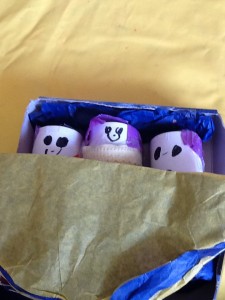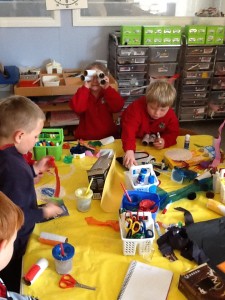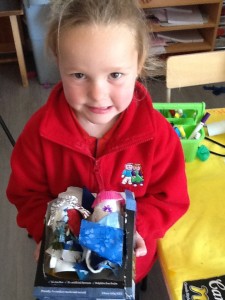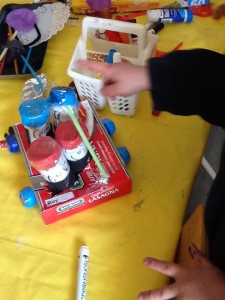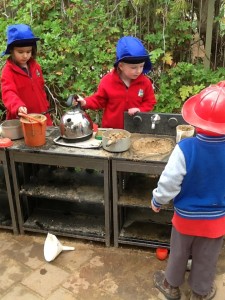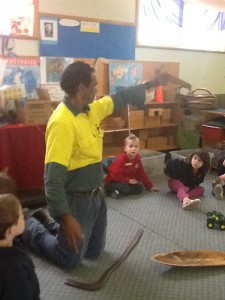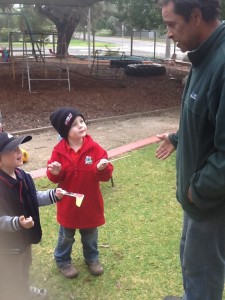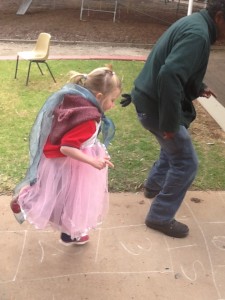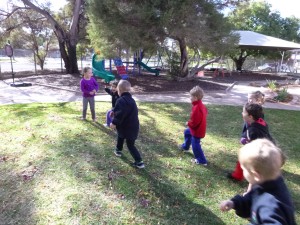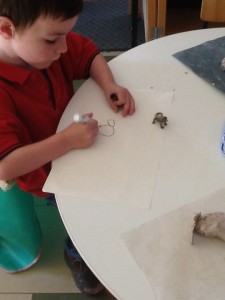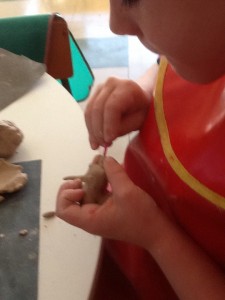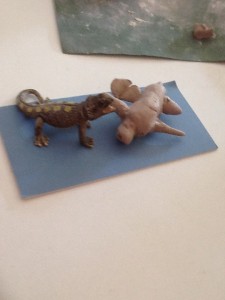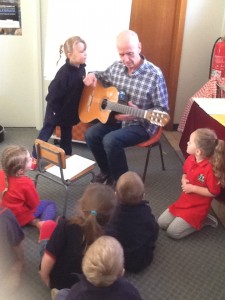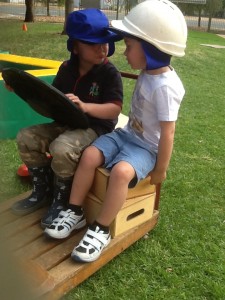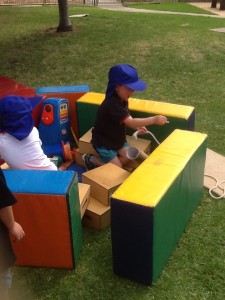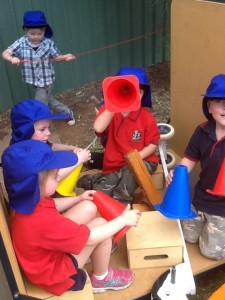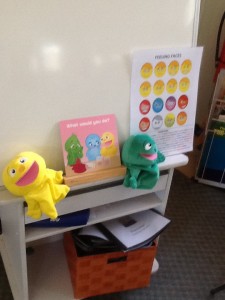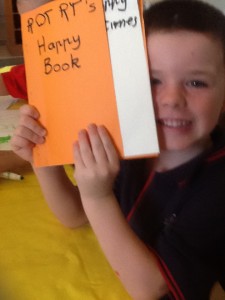Jolie used some cardboard rolls and other bits and pieces to create “3 in the bed” – and when she shared her creation with the rest of the group, there was a rush on cardboard rolls.
So much thought and enjoyment and personal involvement happens around self-chosen art and craft activities. I love the contagious creativity when children share ideas, the language that arises from sharing their stories, the problem-solving (eg in how to represent the knob on top of the radio antennae), the developing fine – motor skills involved in cutting, wrapping, drawing, decorating , and the happy hum of a busy craft table.
